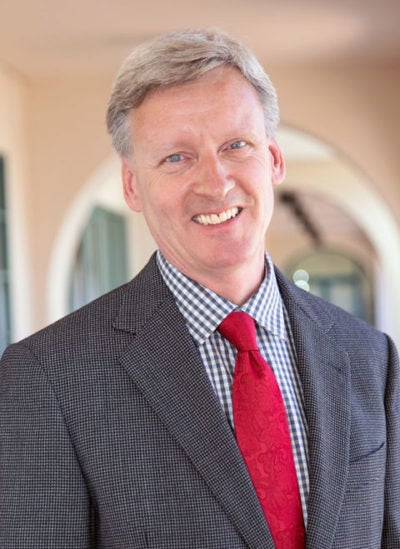Q&A with BEAM’s James Tarbox
James Tarbox came to Stanford in January as Assistant Vice Provost and Executive Director of BEAM (Bridging Education, Ambition, and Meaningful Work). He was previously executive director of career services at San Diego State University.

What is your big-picture goal for BEAM?
Our big-picture goal is to be an active and valued contributor to student development, working with students, campus partners, employers, alumni, and community partners. We are focused on advancing career education, creating career-focused opportunities for students and alumni, and promoting diversity, equity, and inclusion.
How has the pandemic affected students’ career preparation?
The pandemic has impacted student career preparation, especially earlier in the pandemic when the in-person foundation of university recruiting and employment evaporated. As the time progressed, career centers, students, and recruiters reimagined their approaches.
For students in particular, I saw that two core skills allowed students to adjust and advance. These core skills are the ability to reframe and reinvent. Students reframed expectations. For example, they adjusted to virtual recruiting and mastered the online career fairs. Students also reinvented themselves. They made themselves available to meet employers where they were by showing up for shorter-term internships and using their social media skills to communicate, to complete projects, and to be first in line for converting from intern to employee.
I mention these two skills also because by learning to reframe and reinvent, students acquired career development strategies that will serve them well throughout their lives. They now have tested the use of these skills in one of the most challenging environments and seen their efficacy.
What can students do if they have not yet found opportunities for this summer?
In short, don’t give up. Keep looking and be sure to work with our center. We coach students on career development, and our team is here for them. Also, if our country continues to open up from the pandemic, I believe that more opportunities will become available, especially in California.
BEAM provides two core platforms for internship searches: Handshake and SAM (Stanford Alumni Mentoring). I mention that these are core because there are many other online platforms, and opportunities that may exist, for example, within an academic department.
Finally, I encourage students to turn to their communities — friends, family, student organizations — and ask others, ‘Do you know of any internship opportunities?’ Also, don’t get discouraged; every ‘no’ is often one step closer to a ‘yes.’
If you have applied for an internship and have not heard back from the employer, reach out to the employer and say, ‘Do you have any updates on what you’re doing with this opportunity?’ Even if you get a rejection, you can email to say, ‘I’m still very interested – has anybody dropped out?’
For seniors, I would encourage them to meet with one of our career coaches. Seniors may fear talking to us, and that’s OK. If you need a place to start a career coaching conversation, start with something like, ‘I feel lost. Where do I go from here?’ Remember, our team wants to support your success. Also, once you start with a career coach, you are that much closer to your next step on your career path.
Stanford is in Silicon Valley and is known for its engineering programs. What advice do you have for nonengineering students?
There’s a place for you to start your career. It may be using your education in communication, or literature, or psychology to edit media for a high-tech firm, government agency, or local nonprofit. As a history or economics major, you could enter into supply chain management or product design or nonprofit management via work with a foundation for a major corporation.
Try to avoid buying into the myth that you don’t belong because your major is x. True story: My summer internship as a master’s student in the humanities was as a content developer for training in the accounting and consulting industry.
Look broadly, consider all options, and ask questions. If you are at a career fair and an employer seems like it’s for other majors, ask the recruiter, ‘What opportunities do you have for English majors?’ If they reply, ‘None,’ follow up and say, ‘Do others in your organization recruit these majors?’ or, ‘Do you know of other organizations who do?’ Remember, majors in the humanities and other disciplines teach critical thinking. Engaging with recruiters is a great way to apply and develop your critical thinking skills.
What are you reading right now?
One of my new favorite books is Life Is in the Transitions: Mastering Change at Any Age by Bruce Feiler. I used this book recently to work with midlife career transitioners. Many in the group were trying to answer the question, What do I want to do with the rest of my life? It’s the same question that undergraduates ask. To me, it’s an invitation to reframe and reinvent.
I am also learning from Reclaiming Conversation: The Power of Talk in a Digital Age by Sherry Turkle; Big Magic: Creative Living Beyond Fear by Elizabeth Gilbert; Me and White Supremacy by Layla F. Saad; and Daring Greatly by Brené Brown.